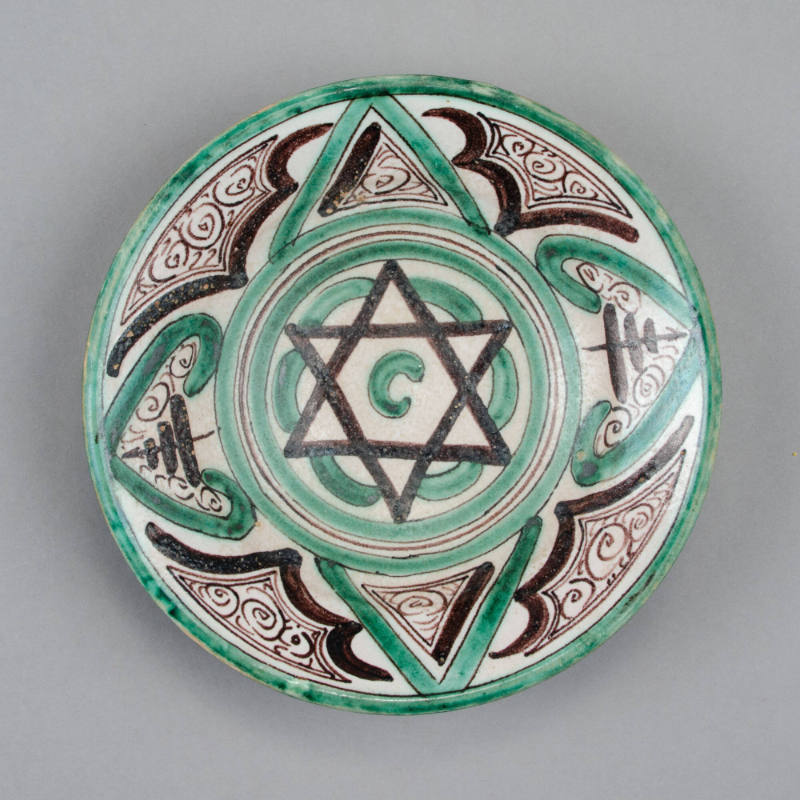DepartmentEurope
Ceramic Plate
NameCeramic Plate
Artist
Ismael Górriz Valero
CultureSpanish
Date1960-1965
Place madeTeruel, Aragon, SPAIN, Europe
MediumCeramic plate with a tin-glazed layer and decorated with metallic oxides of manganese and copper
Dimensionsoverall: 3.5 CM X 16.7 (DIA.)
Credit LineMuseum of International Folk Art, IFAF Collection, FA.1963.13.96
Object numberFA.1963.13.96
DescriptionThe Górriz siblings—Ismael, José Antonio, and Consuelo—began their ceramic work in 1942 in Teruel after their mother acquired a pottery workshop. Their early pieces were small, heavy, and roughly made, drawing from utilitarian "royo" pottery and Gothic or medieval bestiary motifs. By the late 1940s, they were expanding their artistic repertoire through visits to other ceramic centers and involvement in restoration work. Their breakthrough came in 1950 with awards and exhibitions, including national and international recognition, such as a Silver Medal at the First International Handicraft Exhibition in Madrid (1953). From 1954, they shifted to producing decorated ceramics almost exclusively, opening a storefront and developing a signature two-tone (purple and green) style based on medieval iconography. Their growing reputation led to exports to France, Japan, and the U.S., and accolades like Ismael's designation as "Illustrious Craftsman" in 1955.
Through the 1960s and '70s, the Górriz family maintained a prominent role in revitalizing Teruel ceramics, incorporating geometric, zoomorphic, and architectural motifs and expanding their color palette to include blue. Their participation in national fairs and exhibitions garnered numerous awards and widened their international reach. The death of Consuelo in 1975 marked a turning point, leading to reduced production and simpler pieces. Ismael died in 1978, after which José Antonio continued the work sporadically despite health issues, eventually retiring in 1984. Their legacy is preserved in major museums across Spain and internationally, including institutions in Madrid, Hamburg, Santa Fe, and the Dominican Republic, as well as in the lasting revival of Teruel’s artisanal ceramic traditions.
Plate designs feature the Star of David—one of the most recognizable symbols of Judaism—enclosing a crescent moon, an Islamic symbol associated with the start of Ramadan, a sacred period of fasting, prayer, and reflection. Together, these symbols evoke the idealized but historically inaccurate image of peaceful coexistence among the three cultures in Medieval Spain.














